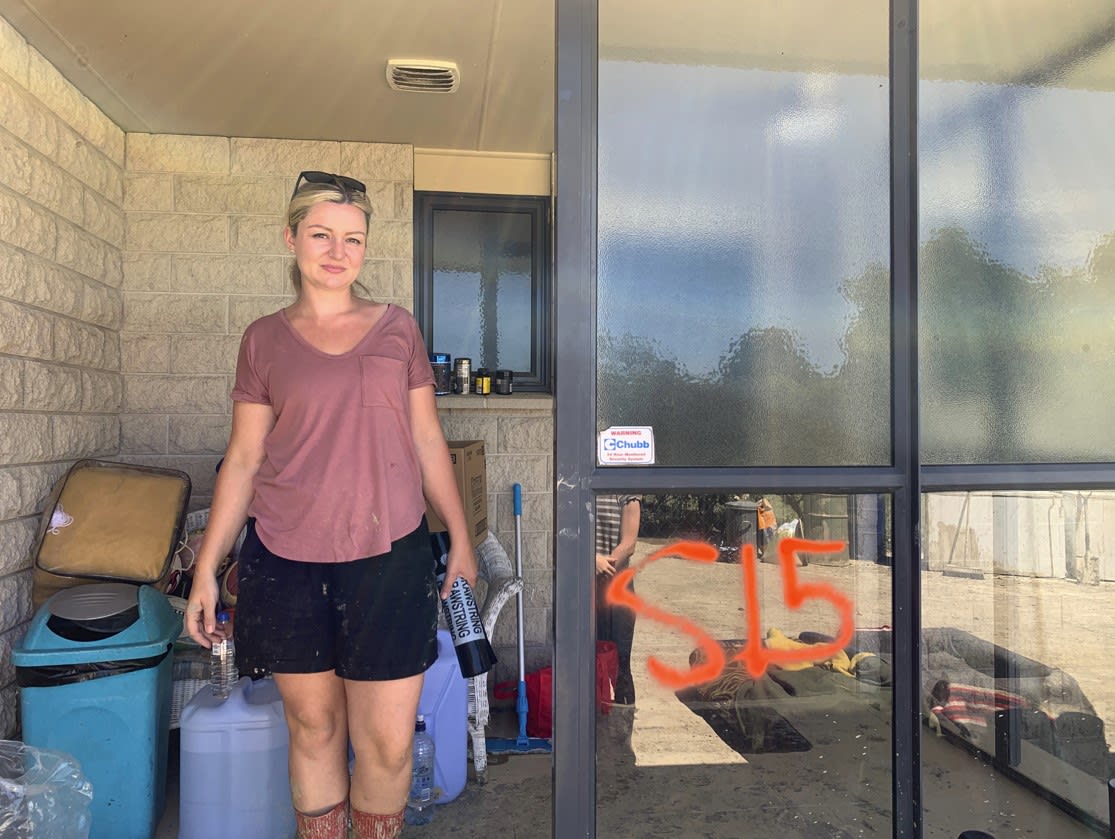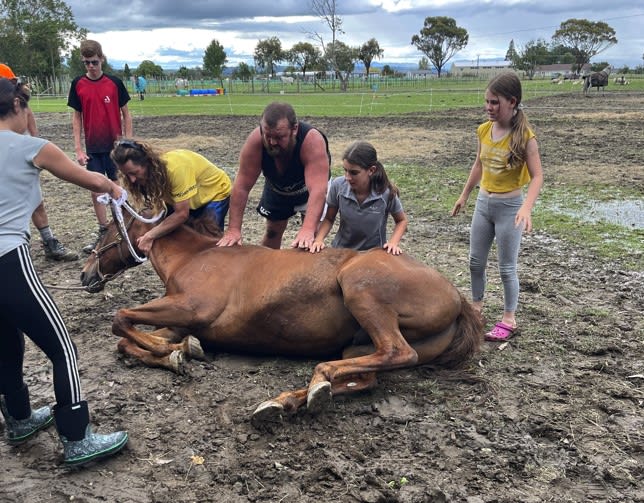
Abuse of flood traffic workers in Hawkes Bay reached the point where two staff had a pistol and sawn off shotgun pointed towards them.
Ryan Lawson runs East Coast Traffic, which is in charge of implementing all the road closures around the Hawkes Bay region.
He told Newsroom staff were facing daily abuse, cars running straight through closures and in one instance the pistol and sawn off shotgun pointed at two workers while they were setting up temporary traffic management.
“Honestly for us it was a very, very scary moment and that crew just had to up and leave.”
Lawson’s company has set up counselling for staff. “It’s all about ensuring our staff are well looked after because it is quite a traumatic time for everyone. It’s just about us dong the best we can with the resources we have, keeping everyone moving but keeping everyone safe.”
There are 14 traffic trucks operating 24/7 but told Newsroom his staff are finding it hard to deal with the number of sightseers.
“It’s been full-on. It’s so devastating. We’ve got residents, but then you’ve got other people just trying to sightsee. It’s difficult for us because we’re the guys who have to try to wheedle out who’s telling the truth, who’s lying. We’re seeing all sorts, from people who are just trying to come through and do looting. But also we’ve got families trying to get through to the most affected parts but we are the guys who have to say no due to the road conditions.”
Meanwhile, the mammoth clean up and recovery in and around Napier has begun. Adding to the chorus of helicopters and sirens is the sound of water blasters and chainsaws, working through mud-filled houses and an uncountable number of downed trees.
Power is slowly being restored to some parts of Napier, but a resident of low income suburb Maraenui doesn’t expect hers to come on any time soon. “We’re always last,” she tells Newsroom.

Thousands of emergency workers, contractors and volunteers are doing whatever they can. Children are mucking-in and clearing houses and schools, which won’t open until Wednesday at the earliest.
Food appears sporadically in the still sparse frozen and fresh aisles at Countdown. Cases of bottled water sitting on large pallets in the fruit and vegetable section are selling for $11 each.
But for those who have been displaced, the first job is to find a longer-term place to stay than with family and friends or in motels and evacuation centres.

Ella Hall lives with her family on an 11-acre property on McLeod Road in Awatoto. They were in their paddocks on Tuesday when they saw a wall of water coming towards them about 11am.
“Mum was looking out in the distance and she turned around and she said “run!”. The banks burst and this wave was coming in.”
They got to safety on the second floor of their home, with their three dogs.
“We were just freaking out. We thought, the house is gonna get taken out. I was on the phone to the emergency. They're like, just stay calm. Just stay calm. I said, I can't. And no one's coming.”
They were eventually rescued by emergency services who came in by boat. They had to swim out the front door.
“As we were going down the road, there was livestock drowning. The pigs were screaming. The sheep were screaming for help. There's nothing you can do.”
She tried to return that night for her four mini ponies and her best friend, Norman, a 25-year-old thoroughbred horse, but it was too unsafe, and so returned the next morning.

They walked them to riding school Take the Reins several kilometres away, but Norman was too exhausted and dehydrated and had to be euthanised.
“I’ve had him since I was 18. He was my best friend.”
She just wishes they’d had more warning. Her friend’s mother lives in nearby Waiohiki, which was flattened by the flood, and by 3am on Tuesday morning she was on her table surrounded by water.
“I'm just so shocked and horrified. If they knew the banks were gone, then it's gonna come this way. It's got nowhere to go. But where can you go when you're standing in the paddock right there and you see a wave. There's just no time to go anywhere.”

Hall and her family have been staying in a motel along Marine Parade, but says she has been struggling to get through to Civil Defence to pay for their accommodation.
“I was told I couldn’t get through for so long because there were too many people ringing up about the food in their fridge having gone off.”
On Sunday they were back on their property, still surrounded by water-filled paddocks, to begin the arduous process of cleaning out their destroyed possessions.
Hall says longer term they will probably move back into the upstairs level of their house, but they still have no idea when power and water will be restored.

Getting around
Go-bags with food and water remain in cars because the likelihood of getting trapped or diverted is high when traversing the sepia toned wasteland that now ringfences Napier.
On one trip to deliver displaced horses to a temporary home up Taihape Road, a group of volunteers had to drive through three access points, under downed electrical wires and past scenes of total destruction.
“The Napier Golf Course at Waiohiki looked more like a beach, fences gone and grass replaced by dunes of silt. Then through Omahu, where every single home and building, including the kura and kohanga, was being gutted by hundreds of volunteers,” one of them told Newsroom.
The same route was blocked on the way back and she was diverted through Hastings, adding an extra hour to a normally 20 minute trip.







